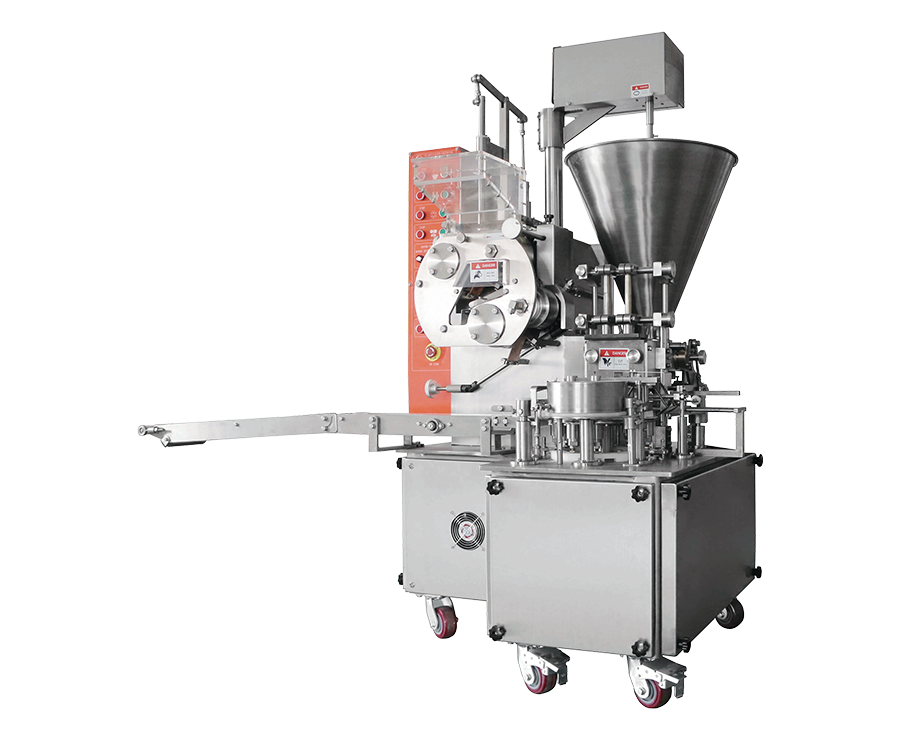Maximizing Efficiency with Your Automatic Wonton Machine: Tips for Peak Performance
In today’s fast-paced food industry, efficiency is king. For businesses specializing in dumplings, siomai, or swallowtail wontons, an Automatic Wonton Machine can be a game-changer. But owning the machine is just the beginning—maximizing its output without compromising quality requires a deeper understanding of its capabilities and optimization strategies. Let’s dive into how you can get the most out of your automatic wonton maker while ensuring consistent results that delight customers.
When it comes to high-speed production, the key lies in balancing speed with precision. An automatic wonton machine is designed to handle large volumes, but factors like dough consistency and filling viscosity play a crucial role in maintaining quality. For instance, if the dough sheets are too dry or brittle, they may tear during the wrapping process, leading to wastage. Similarly, overly sticky or chunky fillings can clog the stuffing bucket, slowing down operations. To avoid these issues, ensure that both the dough and filling meet the recommended specifications. Regularly testing different dough recipes and adjusting the machine’s settings for skin thickness can help you strike the perfect balance. This way, your automatic wonton machine operates at peak efficiency while producing beautifully shaped dumplings every time.
Energy consumption is another critical aspect to consider when optimizing your machine’s performance. While automated solutions like this one are far more efficient than manual labor, they still require electricity to function. To reduce energy usage, schedule production runs during off-peak hours if possible, as this can lower utility costs. Additionally, keeping the machine well-maintained ensures it runs smoothly without unnecessary strain on its motors. For example, regularly lubricating moving parts and cleaning the hopper after each use prevents friction and wear, which could otherwise lead to higher energy demands. By adopting these practices, your automatic wonton-making equipment not only becomes more cost-effective but also aligns with sustainability goals—a win-win for your business and the environment.

Beyond operational tweaks, leveraging technology can further enhance your machine’s efficiency. Some advanced models come equipped with IoT-enabled features that allow real-time monitoring of performance metrics. These insights can help you identify patterns, such as when the machine tends to slow down or require maintenance, enabling proactive adjustments. Even if your current model doesn’t offer such capabilities, integrating it into a smart kitchen ecosystem could be a future upgrade worth considering. Imagine being able to control your automatic wonton machine remotely via an app, ensuring seamless production even when you’re not physically present. Such innovations not only save time but also elevate your operation’s professionalism.
Of course, no discussion about efficiency would be complete without addressing the human element. Training staff to operate the machine effectively is essential for maximizing productivity. Provide hands-on demonstrations and create a checklist of best practices, such as how to load the dough and filling buckets correctly or troubleshoot minor issues. Empowering your team with this knowledge reduces downtime and fosters a sense of ownership over the equipment. Over time, their familiarity with the machine will translate into faster setup times and smoother workflows, allowing your business to scale effortlessly.
Ultimately, the success of your automatic wonton machine hinges on a combination of smart planning, regular maintenance, and adaptability. Whether you’re running a bustling restaurant or a large-scale manufacturing facility, optimizing this piece of equipment can significantly boost your bottom line. By focusing on factors like material compatibility, energy efficiency, and staff training, you’ll unlock the full potential of your automatic wonton maker. So go ahead—put these tips into action and watch your production soar while maintaining the high standards your customers expect. After all, in the world of dumpling production, efficiency isn’t just about speed; it’s about delivering perfection, batch after batch.

 English
English Español
Español Français
Français русский
русский عربى
عربى






Contact Us